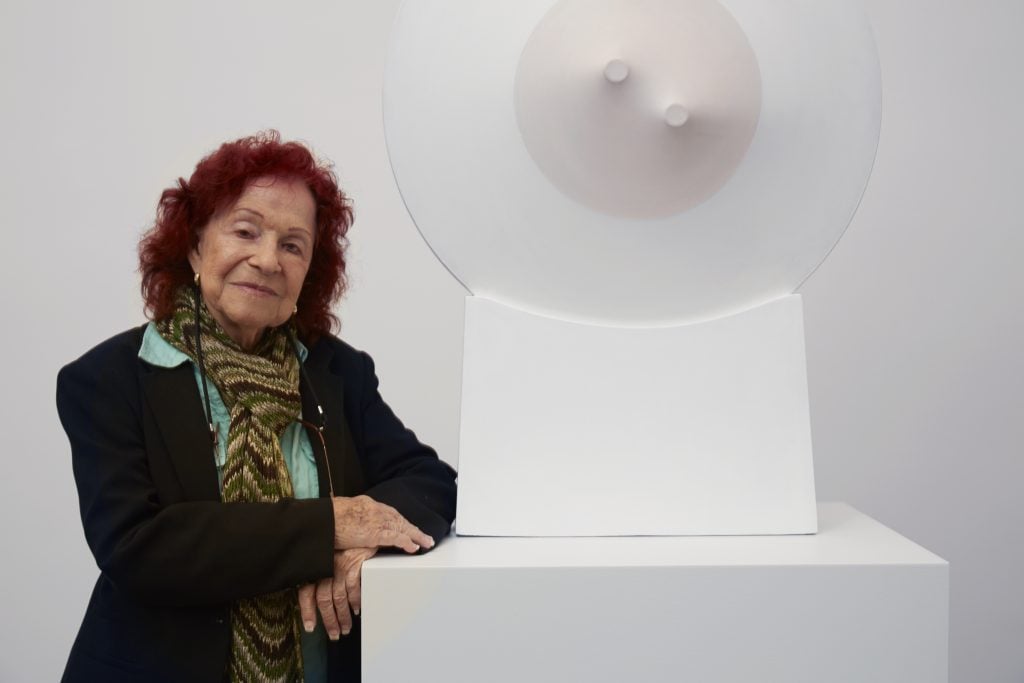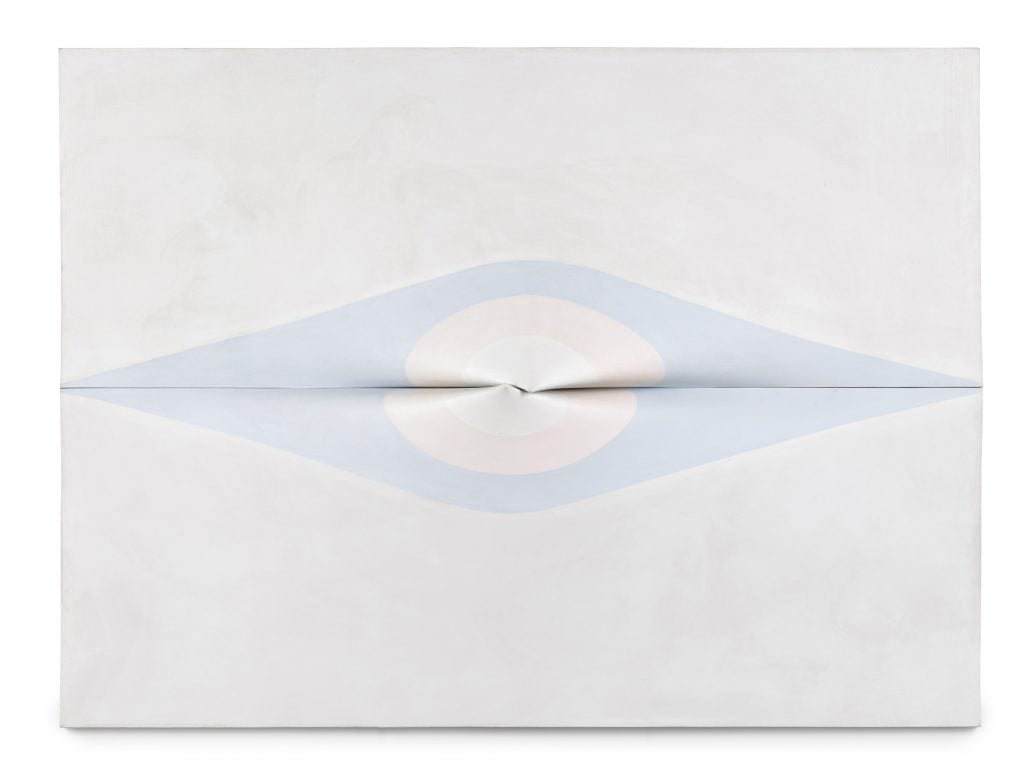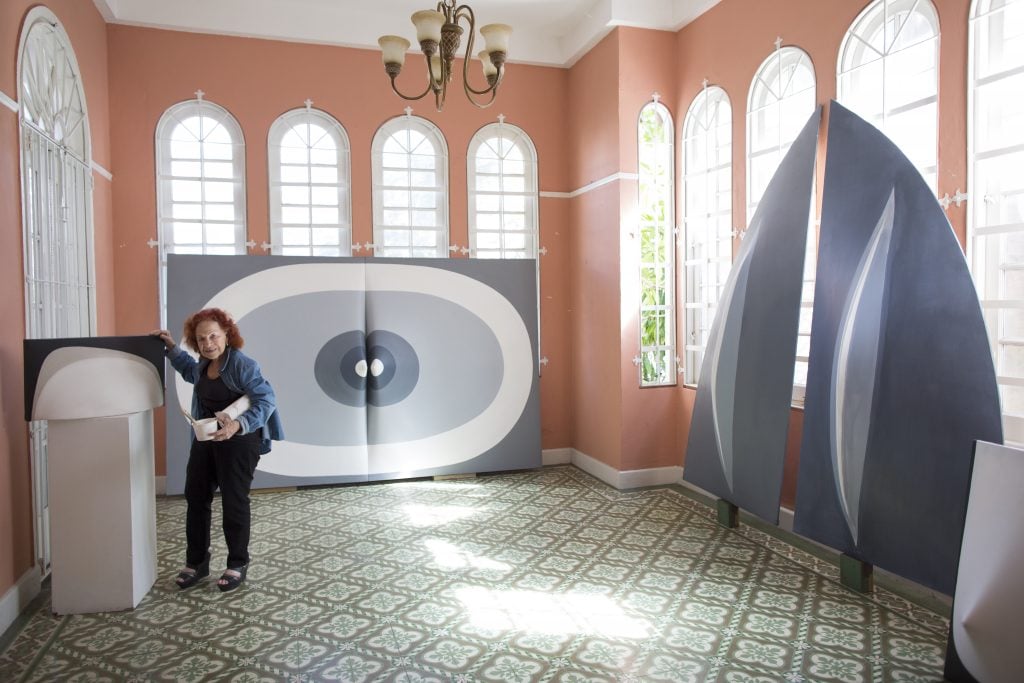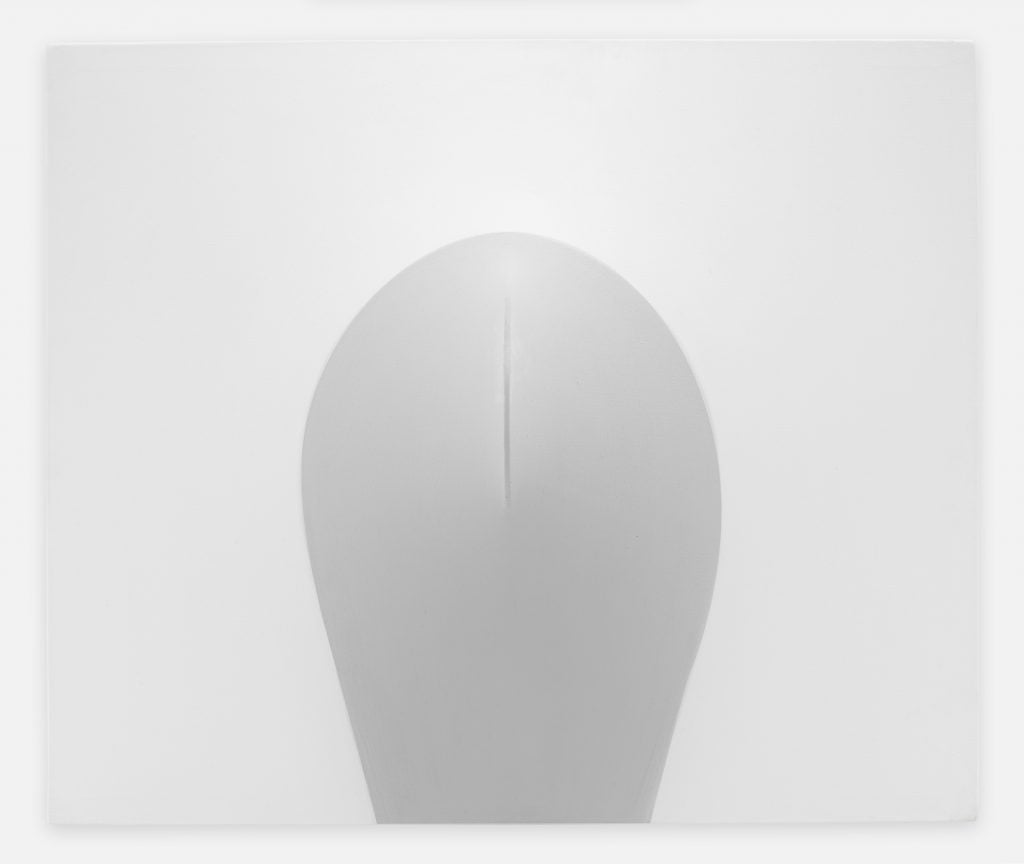The work of Cuban painter and sculptor Zilia Sanchez is an interesting example of the insight that allowed her to create a simple expressive and memorable style and to open a new line between object and abstract visual art.

Cuban painter, sculptor and graphic artist Zilia Sánchez has passed away at the age of 98. Galerie Lelong and Co. which had represented the artist since 2013, confirmed the sad news, writes Artnet blogger Sarah Cascone.
Born in Havana in 1926, Sanchez was recognized in her homeland early in her artistic career but was later forced to leave Cuba and go into exile. She eventually found her home in Puerto Rico in 1971.
For many years, Sanchez gave herself completely to her art, focusing on creating her unique works on canvases stretched over specially made wooden structures. This allowed her to form sculptural elevations and depressions that departed unexpectedly from the plane of the wall. (The artist said that the inspiration for these forms came to her when she saw the sheet on her father’s deathbed rippling in the wind.
Zilia Sanchez, Eros (1976/1998 ). Photo ©Zilia Sanchez, provided by kind permission of Galerie Lelong and Co., New York.Sanchez literally pushed the boundaries of painting, creating a three-dimensional series of works rendered in delicate shades of white, gray, pastel blue, and pink. These works were called “Erotic Topologies” and could be perceived as abstract representations of female forms. ( Her openly LGBT identity clearly complicated the development of her professional career.) Her paintings, which rise to the level of sculpture, went unappreciated for decades before the global art community recognized their significance outside of Puerto Rico.
“Despite her short stature, Sanchez has traveled a path in the art world that went largely unappreciated until she was in her 80s,” Mary Sabbatino, vice president of Galerie Lelong, wrote in an email. “May it serve as an inspiration to so many of us.”
The gallerist first encountered Sanchez’s work in 2013, when New York’s Artists Space hosted her first retrospective exhibition in the United States.
“The day after my gallery colleague showed me images of Zilia’s work on his phone, I snapped out of the ADAA Art Fair gala, still in my evening gown, and hastily boarded an overnight flight to San Juan,” Sabbatino recalls. “At lunch the next day, she took my hand and said: ‘Cuida mis obras’: take care of my work.”

Over time, Sánchez has finally been properly recognized for her groundbreaking works. A key moment came in 2017, when her work was featured in the exhibition “Radical Women: Latina Art, 1960-85” at the Hammer Museum at UCLA and the Brooklyn Museum. ( Interestingly, the opening of the Los Angeles exhibition coincided with Hurricane Maria, which devastated San Juan-the elements tore the roof off Sanchez’s studio and destroyed much of her art archive.)
Sanchez has twice been an international exhibitor at the Venice Biennale, first with “Viva Arte Viva” in 2017 and then with “Stranieri Ovunque – Foreigners Everywhere” in 2024. In addition, Galerie Lelong has ensured a steady presence of her work at leading art fairs by presenting her works in its own booths at Frieze Masters and Art Basel Miami Beach, as well as through exhibition projects in the gallery itself.
Until 2014, no work by Sanchez had ever sold at auction. Today, however, her record sale stands at $175,000, achieved at Sotheby’s New York auction in 2019, according to Artnet’s price database. On top of that, 17 other deals were made in the range of$12,000 to$112,000.
Her work has also generated significant interest among major institutions. The collections of the Tate Modern in London, the Museum of Contemporary Art Chicago, the Pérez Art Museum in Miami, the Crystal Bridges Museum of American Art in Bentonville, Arkansas, and the Solomon R. Guggenheim Museum and Museum of Modern Art in New York have added her works to their collections.

Her drive to create innovative art has never waned.
“Why do I keep making art? Because it’s my need. It’s inside me, and I have to go to my studio,” Sanchez said (translated from Spanish) in a 2018 interview for Phillips Collection in Washington, DC.
This conversation coincided with her first museum retrospective entitled “Zilia Sánchez: Soy Isla (I Am an Island) “, which presented more than 60 works from the 1950s to the present. The exhibition, organized by Phillips, was subsequently shown at the Museo de Arte de Ponce in Puerto Rico and El Museo del Barrio in New York. The latter characterized the artist as “productive, innovative, but still largely unknown.”
At the age of 93, Sánchez remained calm and confident. The title of the exhibition was inspired by one of her quotes: “I often say, ‘I am an island. Accept that and leave me alone.” The earth and rocks are solid, but they don’t float. And I love to float and feel freedom.”
After leaving Cuba in 1960, Sanchez lived in various countries including Spain, Italy, Canada and the United States before finally settling in Puerto Rico. In New York, she studied art restoration techniques at the Herbert E. Feist Gallery and trained in printmaking at the Pratt Institute in Brooklyn. She also attended the Central Institute of Conservation and Restoration in Madrid.

